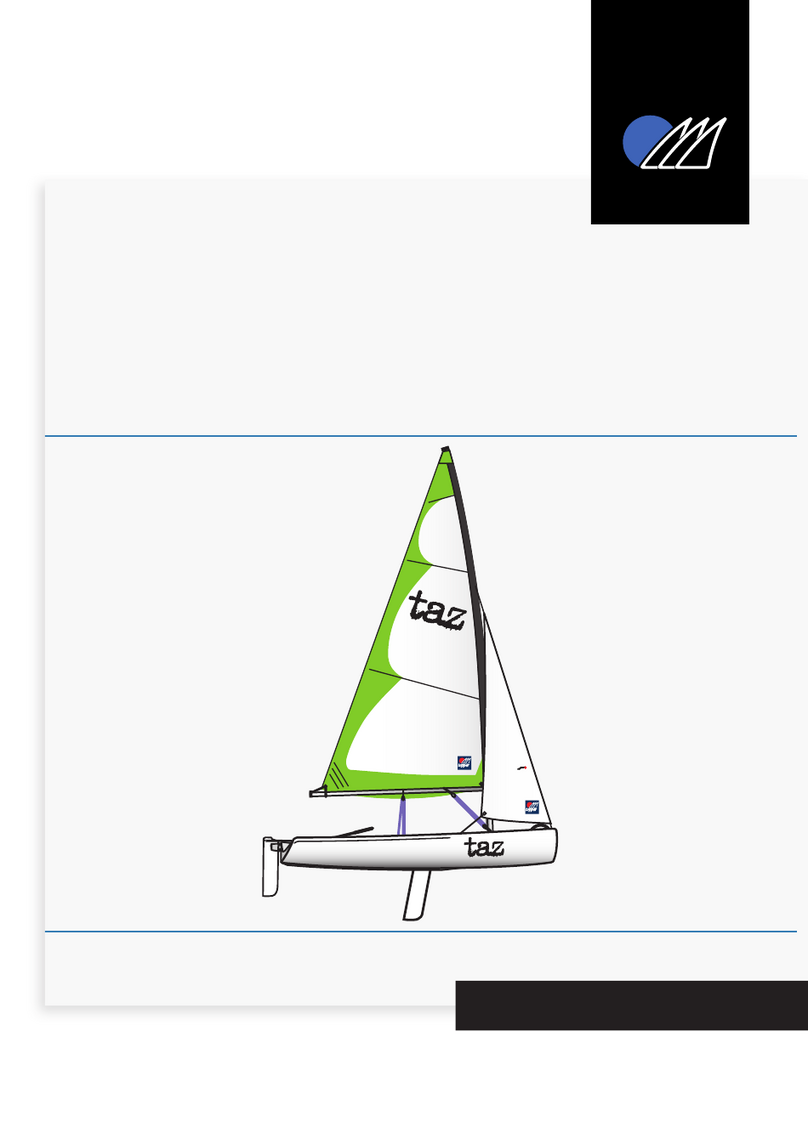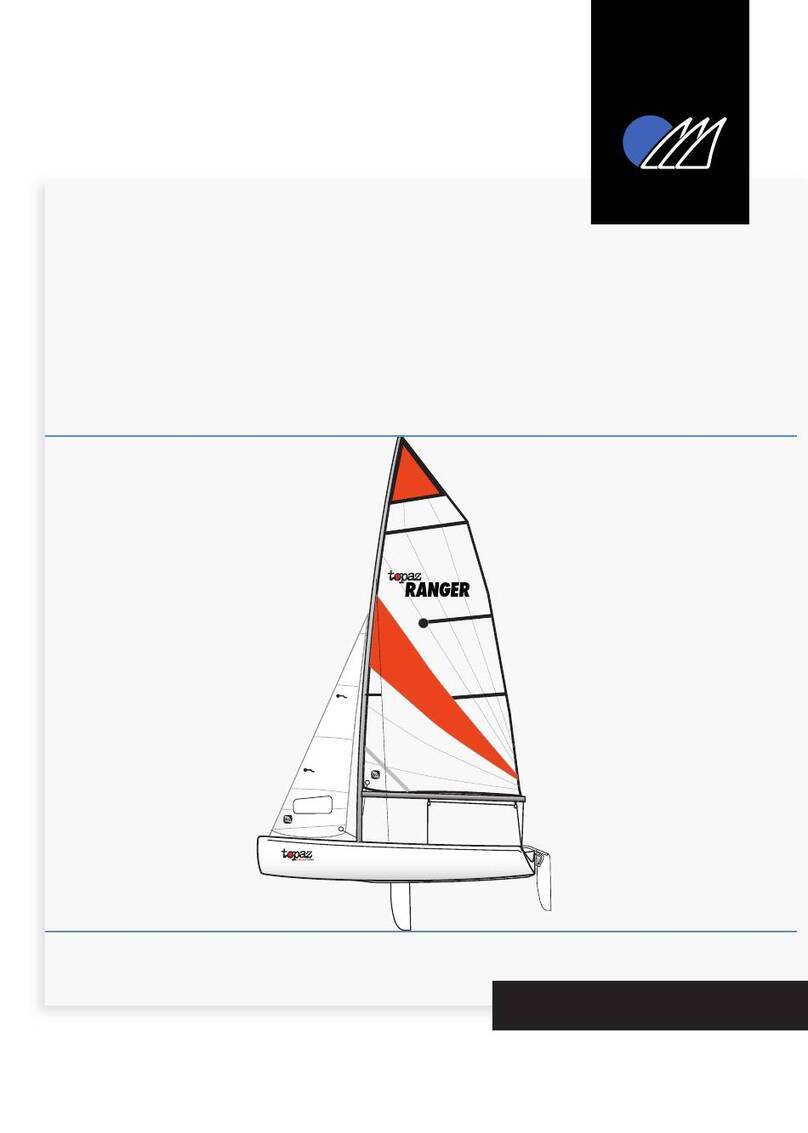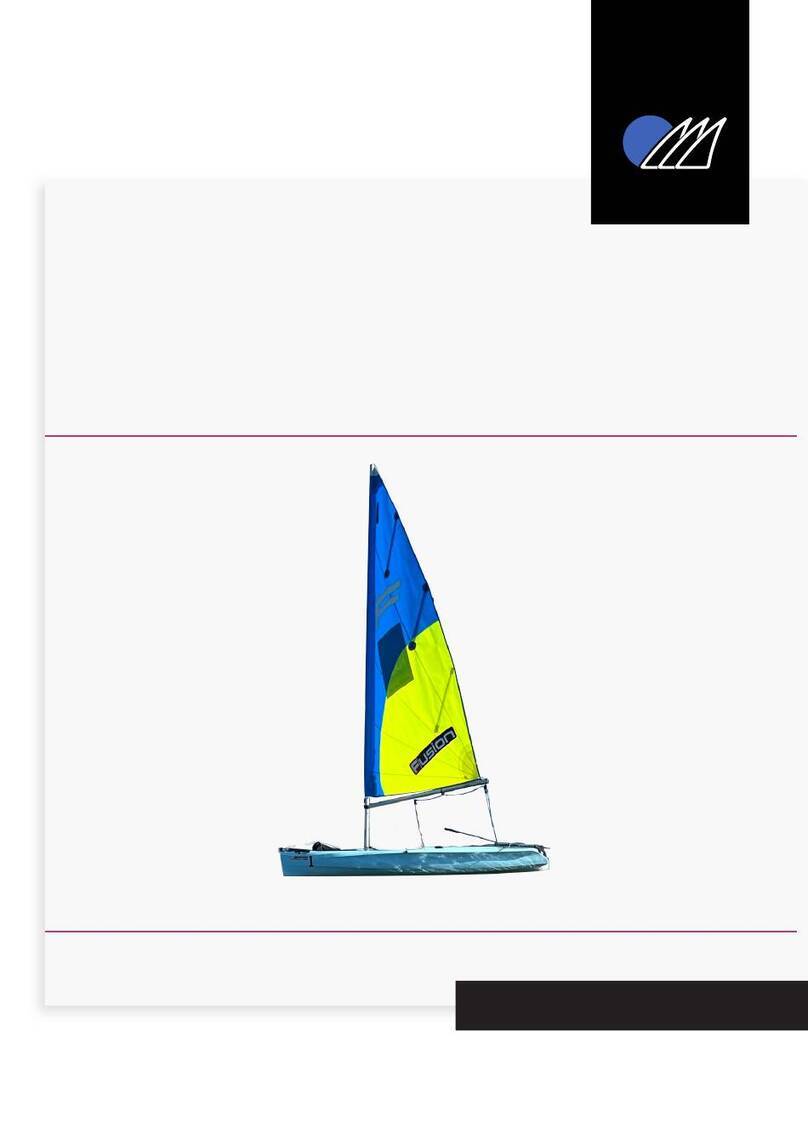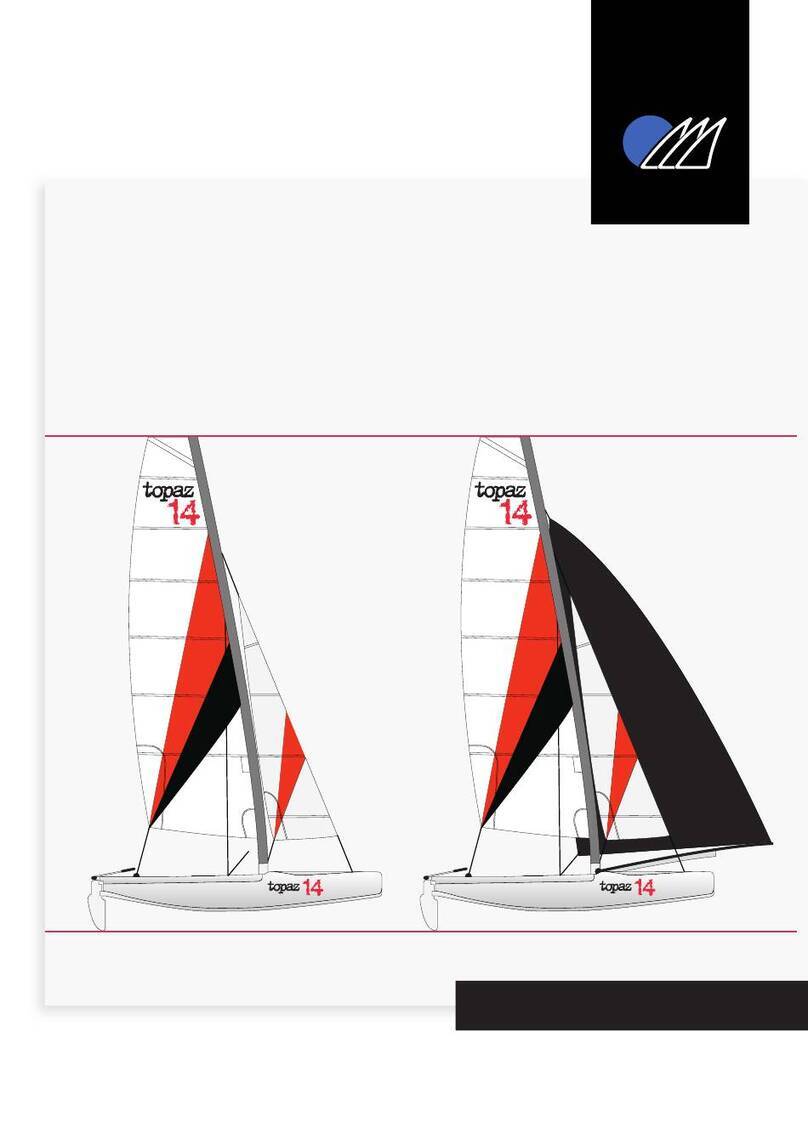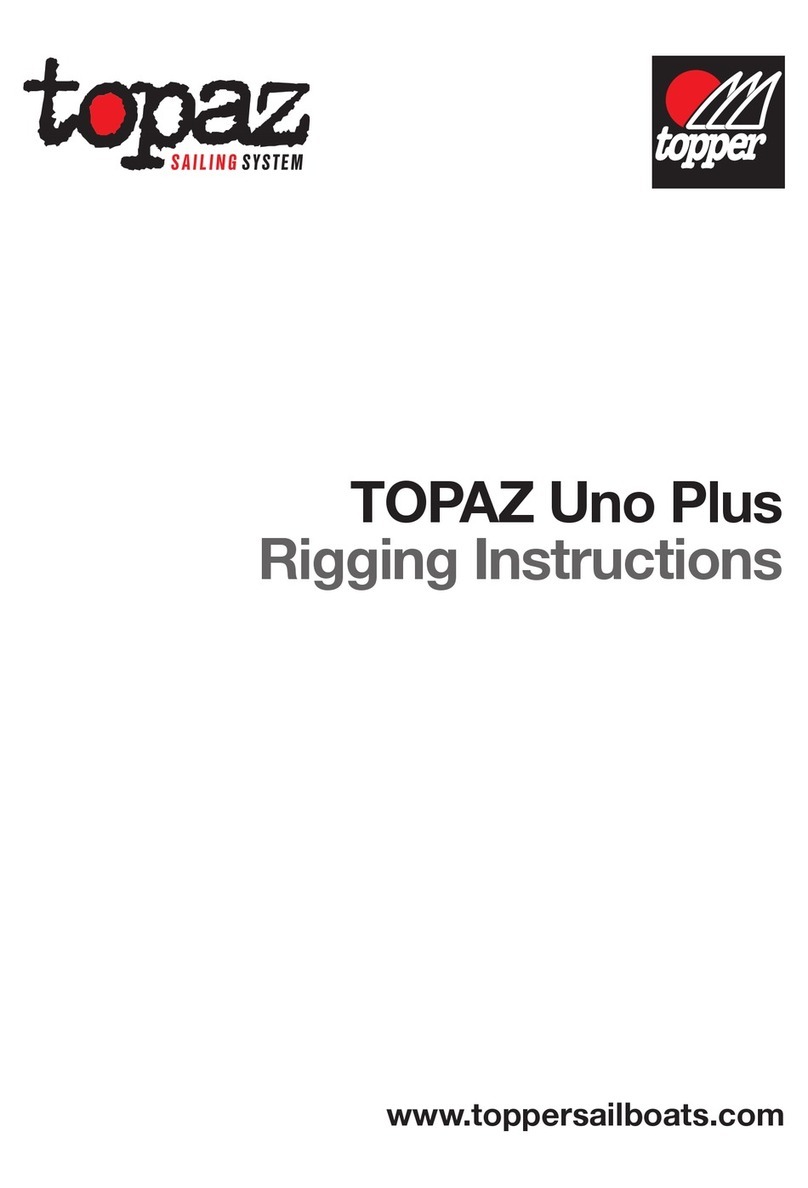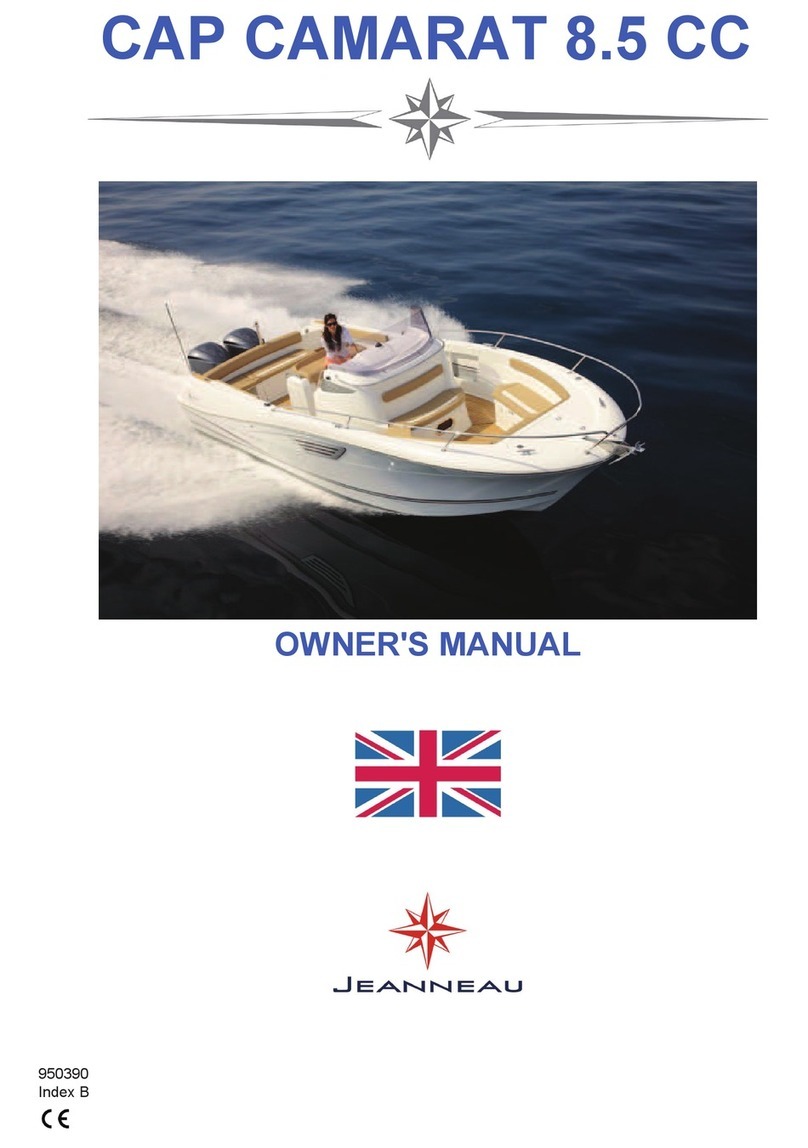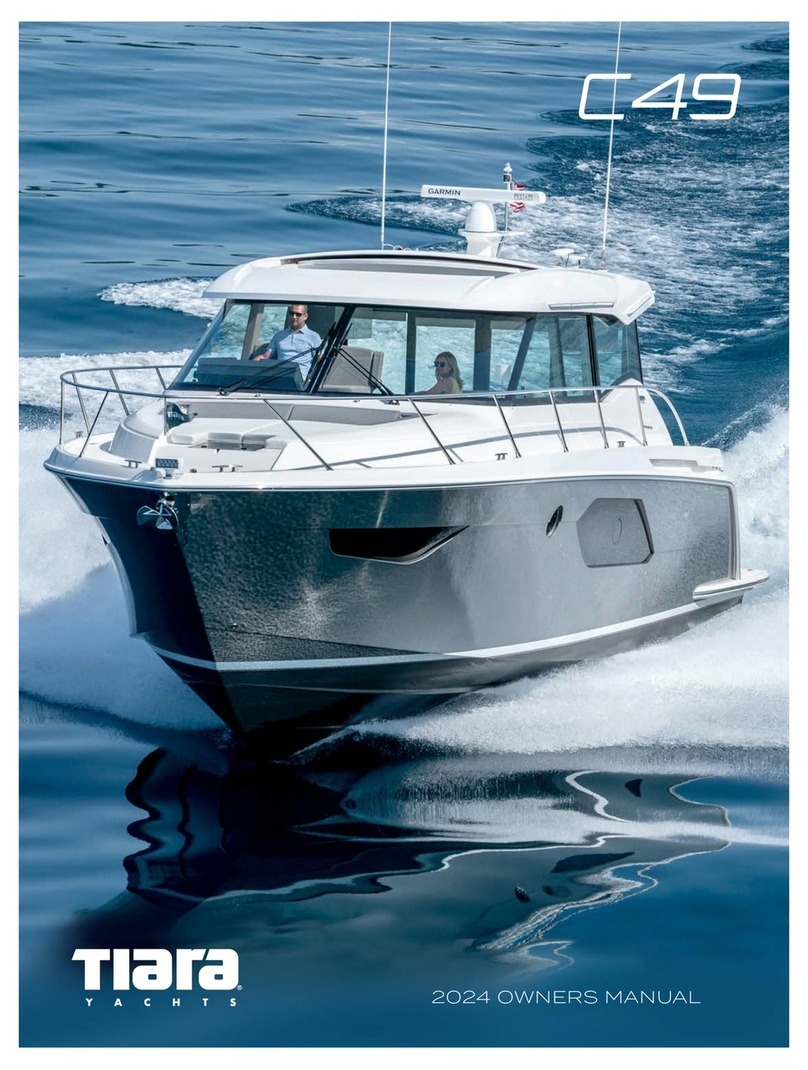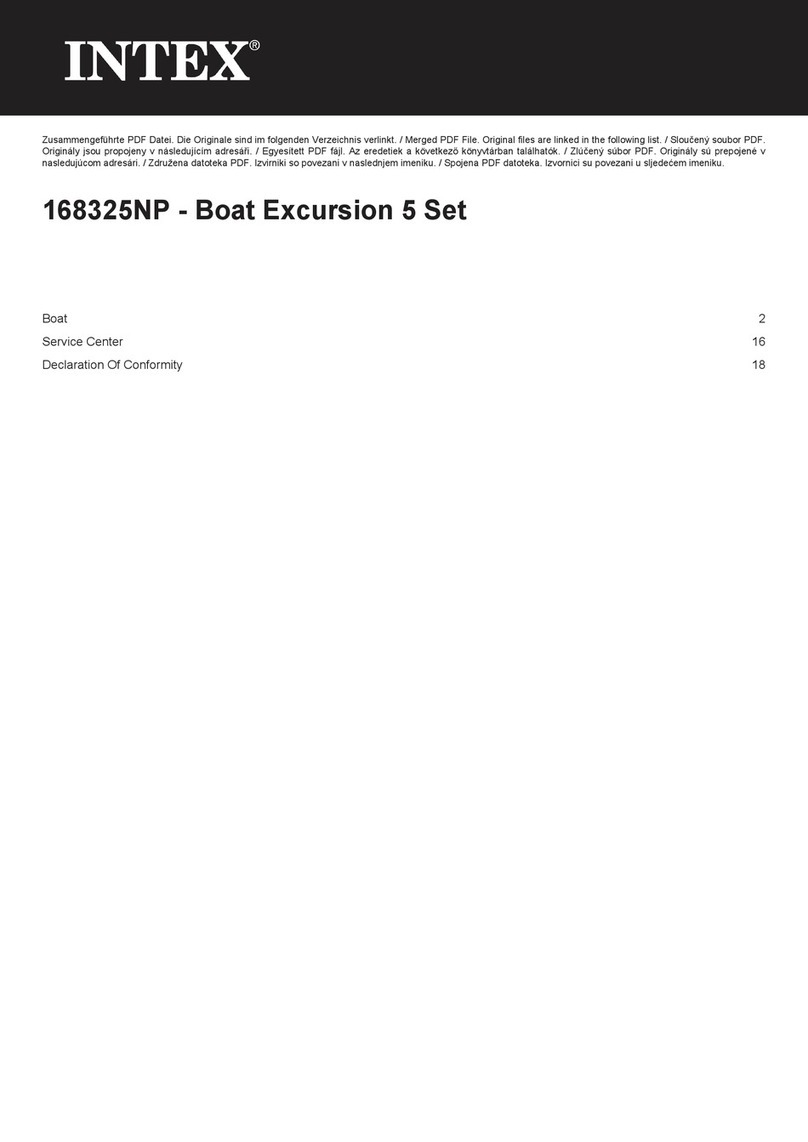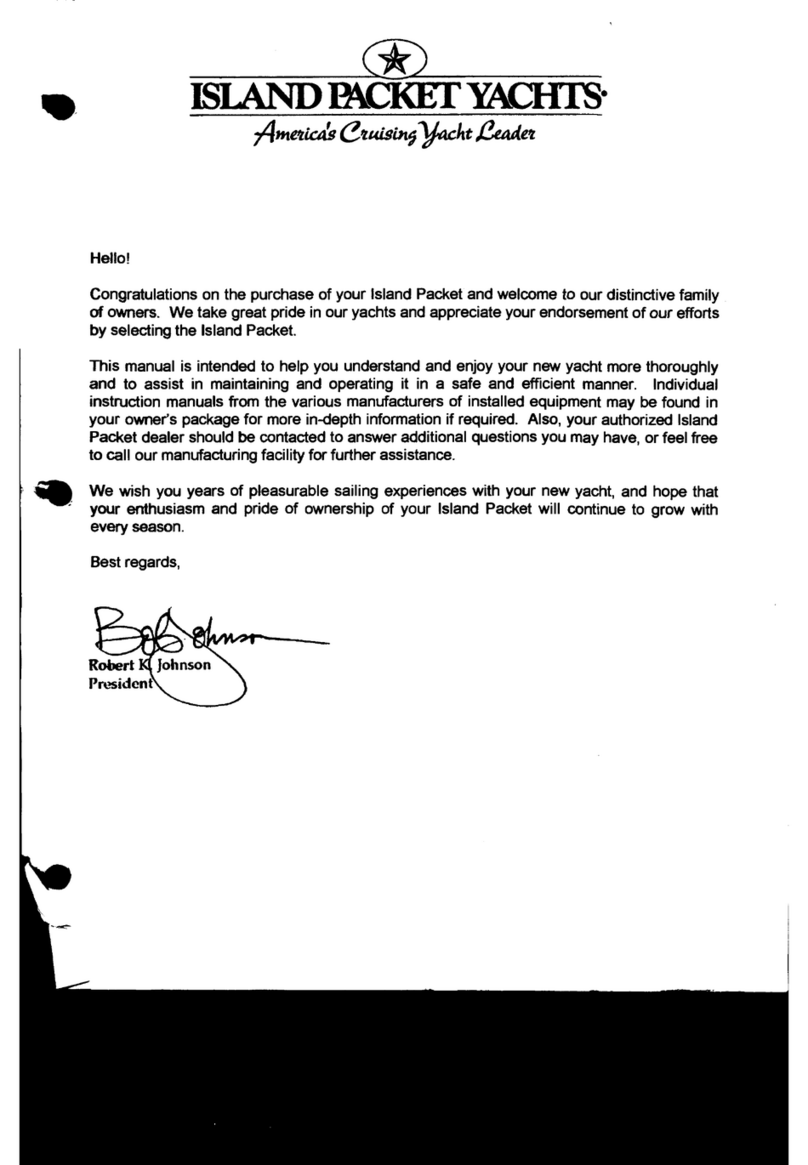
2
maintenance
boat in the best condition.
Rudder
Never launch your boat without checking that the retaining clip has clicked into place beneath the
Sails
Although the battens protect the mainsail to a certain extent, do not leave the mainsail hoisted for
extended periods of time.
Raise and drop the spinnaker as smoothly as possible, as this will extend the life of the sail. Avoid
trawling the spinnaker through the water, this can damage the sail and get the spinnaker stuck
around the bow of the boat.
Remove the spinnaker from the chute after sailing; if the sail is left it can attract mice that damage
the sail.
Always dry the sail before folding and packing it away.
Always rinse the sails and the boat after sailing in salt water.
ALWAYS RELEASE JIB TENSION WHEN NOT SAILING
Foils
between the stock when down. Any movement between the blade and the stock, or the stock and
the hull may cause steering problems.
Small dents can be repaired by gently warming the hull with a hot air blower (take care not to melt
the hull). For any more substantial repairs refer to Topper Sailboats.
after salt water exposure.
Always remove the bung to empty any water after sailing, and when not sailing leave the bung out to
Ropes
Always replace any ropes that are showing any signs of wear immediately.






